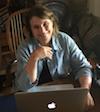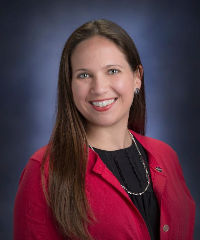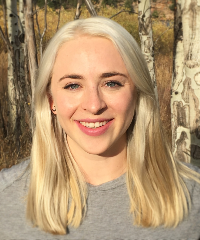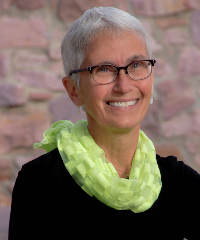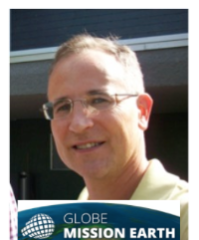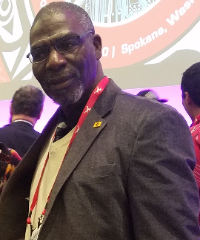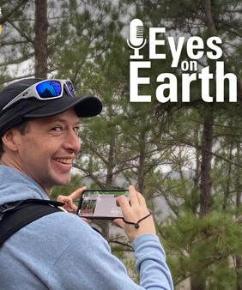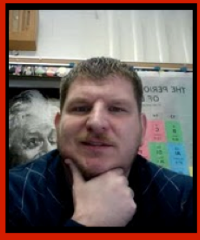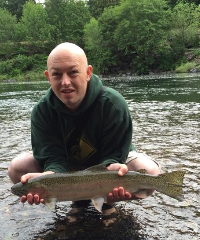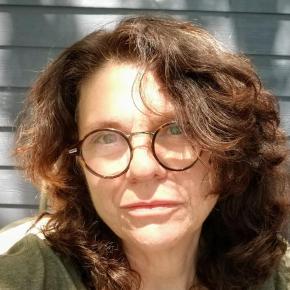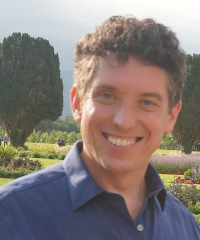Community Blogs
Community Blogs
Discover how the GLOBE community is engaging in all things GLOBE through the community blog posts below.
Learn how to create a GLOBE community blog post.
Filter By:
Blogs List
Our mosquito story is a climate story. In the Early Holocene around 8200 years ago, the area that is today the Sahara Desert was much wetter and supported grassland vegetation. During the mid-Holocene, about 5000 years ago, changes in the monsoon began to dry out much of north Africa. This caused the Sahara to expand, and the yellow fever mosquito ( Aedes aegypti) was forced to retreat to areas where they could still find standing water to breed. These were also the same places where humans migrated, congregated and settled. A changing climate brought people and mosquitoes together, and ...
Read More »
Posted in:
Whenever you submit a cloud observations, the GLOBE Clouds team at NASA Langley Research Center looks for satellites that were over your area at about the same time. The team then gathers the information from these satellites and compares them to your own observations. The result is a satellite match table that you receive through an email!
The table allows you to compare what you saw and what the satellite noted. You also have the actual satellite image at the bottom of the table! A new "How to Read a Satellite Match" page is available for you to learn ...
Posted in:
Curriculum:
EDUCATION RESEARCH
SCIENCE AND MATH
Event Topics:
SCIENCE SYMPOSIA AND FAIRS
GLOBE Science Topics:
SCIENTIST SKILLS
GLOBE PROTOCOLS
GENERAL SCIENCE
Investigation Areas:
ATMOSPHERE
Learning Activities:
ATMOSPHERE AND CLIMATE
News Topics:
VIRTUAL SCIENCE FAIR
Primary Audience:
TRAINERS
TEACHERS
STUDENTS
PARTNERS
SCIENTISTS
COUNTRY COORDINATORS
Greetings from NASA and the Trees Around the GLOBE Student Research Campaign ,
As you know, we have a series of informal webinars ongoing each month that bring together members of the campaign with scientists, researchers, professionals, and informal educators to show what the studies of trees mean to their disciplines.
Right now, we are seeking teachers and students to present their research at future campaign webinars. You can present on:
How we collect tree height, land cover, Green Up/Green Down data!
How we analyze the data we collect!
The types of research ...
Posted in:
It’s that time of the year again! In the Northern Hemisphere, the chlorophyll in leaves are breaking down causing the green in leaves to disappear and allowing for orange and yellow colors to become visible. At GLOBE, we call this process Green-Down , and if you have not started collecting your Green-Down data yet, it's not too late*!
*If you are in the U.S., you can track the annual progressive changing of the leaves with this Fall Foliage Prediction Map from Smokey Mountains. ( https://smokymountains.com/fall-foliage-map/ )
The GLOBE Plant Color Guide ...
Posted in:
Investigation Areas:
GREEN-UP / GREEN-DOWN
Primary Audience:
TEACHERS
To join the campaign, follow these steps:
Visit the Campaign Community Page , scroll down, and click the "Join Community" link above the map.
Take Biometry Tree Height measurements.
Decide which other Protocols you and your students will use to take local environmental measurements.
Start taking your protocol measurements and submit them to GLOBE through the Data Entry Page .
Connect with us by attending the campaign Webinars and engage in some discussions with other GLOBE schools, scientists, researchers, and campaign team.
Work with your students to ...
Posted in:
The NASA Ice, Cloud and land Elevation Satellite-2 (ICESat-2) launched from Vandenberg AFB on Saturday, September 15, 2018 at 6:02am PDT.
On September 30, 2018, ICESat-2 fired its first laser and on October 3, NASA received the first height measurements from the satellite.
A visualization of ICESat-2 data, called a photon cloud, shows the first set of height measurements from the satellite, taken as it orbited over the Antarctic ice sheet. Each blue dot represents a photon detected by the ATLAS instrument. This photon cloud shows the elevation measured by photons in ...
Posted in:
Welcome Message from Dr. Russanne Low, GLOBE Mission Mosquito Science Lead
Welcome to the GLOBE Mission Mosquito Scientists’ Blog. This is the space on the campaign site where student scientists, citizen scientists of all ages, and full-time researchers discuss and explore how changing weather, extreme weather events, land cover modification, insect ecology, and even human behavior influence the numbers, range, and distribution of mosquitoes we see on the landscape. The scientists you meet in this blog are interested in a wide variety of questions. We invite you to ...
Posted in:
The NASA Ice, Cloud and land Elevation Satellite-2 (ICESat-2) launched from Vandenberg AFB on Saturday, September 15, 2018 at 6:02am PDT.
On September 30, 2018, ICESat-2 fired its first laser and on October 3, NASA received the first height measurements from the satellite.
A visualization of ICESat-2 data, called a photon cloud, shows the first set of height measurements from the satellite, taken as it orbited over the Antarctic ice sheet. Each blue dot represents a photon detected by the ATLAS instrument. This photon cloud shows the elevation measured by photons in ...
Posted in:
GLOBE Working Groups:
TECHNOLOGY WORKING GROUP
EVALUATION WORKING GROUP
SCIENCE WORKING GROUP
EDUCATION WORKING GROUP
Investigation Areas:
ATMOSPHERE
EARTH AS A SYSTEM
HYDROSPHERE
PEDOSPHERE (SOIL)
BIOSPHERE
News Topics:
VIRTUAL SCIENCE FAIR
Primary Audience:
TRAINERS
TEACHERS
STUDENTS
PARTNERS
SCIENTISTS
ALUMNI
COUNTRY COORDINATORS
It is here! The Urban Heat Island Effect/Surface Temperature Campaign for 2018-2019 will start October 1. I am so excited to be kicking off a new campaign. There are so many more schools and students participating that it is very exciting.
The Urban Heat Island is a very current and timely research topic to study. This past summer there were heat waves in Japan, the United Kingdom and Europe as well as parts of the United States. Heat waves are now the natural disasters causing the most deaths in the United States. Urban Heat Island Effect makes cities even warmer than surrounding ...
Posted in:
Field Campaigns:
SURFACE TEMPERATURE
Hi, my name is Nate Raynor and I am the GLOBE Teacher at Mescalero Apache School located in south central New Mexico .
GLOBE Teacher Nate Raynor (left) with
his students and NM GLOBE Partner Christy Wall
(second from left) at the 2018 SRS in Boulder, CO.
This is my 2 nd year using GLOBE protocols in the classroom. I like GLOBE because it gives my students a chance to work outside and not be stuck in a classroom all day. With GLOBE, my students begin to see their environment from a different aspect.
I am currently using GLOBE ...
Posted in:
Curriculum:
STEM
SCIENCE AND MATH
Event Topics:
SCIENCE SYMPOSIA AND FAIRS
GLOBE Science Topics:
SCIENTIST SKILLS
MEETINGS/CONFERENCES
GLOBE PROTOCOLS
Investigation Areas:
BIOMETRY (INCLUDING TREE HEIGHT)
CLOUDS
Primary Audience:
TEACHERS
STUDENTS
Teacher's Guide:
SECONDARY: 9-12
PROTOCOL INSTRUCTIONS
Clouds are amazing to observe and always seem to capture the attention of all, from little ones to the young at heart. The GLOBE Clouds team would like to help all of those that would be interested in doing research with clouds. A good research question is always tricky so here are some tips and ideas to get you started!
What is a good research question?
It is not always easy to come up with a research question, but GLOBE has a good checklist to help you out! You can even assign points and see how many points does your question total as a good research question. A ...
Posted in:
Curriculum:
STEM
EDUCATION RESEARCH
SCIENCE AND MATH
Event Topics:
CAMPAIGNS AND PROJECTS (IOPS, ETC)
SCIENCE SYMPOSIA AND FAIRS
GLOBE Science Topics:
SCIENTIST SKILLS
GLOBE PROTOCOLS
GENERAL SCIENCE
DATA INCLUDED
BACKYARD SCIENCE
CLIMATE
Investigation Areas:
CLOUDS
Learning Activities:
ATMOSPHERE AND CLIMATE
News Topics:
VIRTUAL SCIENCE FAIR
Primary Audience:
TEACHERS
TRAINERS
STUDENTS
PARTNERS
ALUMNI
Teacher's Guide:
GRADE LEVELS
INVESTIGATION AREA DOCUMENTS
Here is the recording of my 3-minute lightening talk at the Google Earth Engine User Summit 2018 meeting.
"Planetary Education: Google Earth Engine + The GLOBE Program"
Read more about this event here: https://medium.com/google-earth/2018-earth-engine-user-summit-recap-4da4665d5ee8
I invite students, teachers, and partners to add a comment below if you would like to explore how to use GLOBE data with this powerful remote sensing tool.
Posted in:
GLOBE Science Topics:
GENERAL SCIENCE
SCIENTIST SKILLS
News Topics:
VIDEO
Primary Audience:
TRAINERS
TEACHERS
STUDENTS
PARTNERS
SCIENTISTS
ALUMNI
COUNTRY COORDINATORS
After a couple days with very high heat indexes for north central Ohio [which resulted in school being closed on Wednesday], the temperatures dropped to a level that allowed my students in Citizen Science Research to head out to two of our atmospheric sites. I walked them through the site definition on one site, leaving the 2nd site for them to complete next week. They also worked through the cloud protocol in small teams and then compared observations. With the images included on the cloud data sheet, they all felt comfortable with this protocol. They also ...
Posted in:
Field Campaigns:
SURFACE TEMPERATURE
The ICESat-2 Satellite will launch from Vandenberg Air Force Base in Lompoc, California on Saturday, September 15, 2016. At this time, the Trees Around the GLOBE Student Research Campaign will officially begin.
If you happen to find yourself in Lompoc, California for the launch, please take a look at this Explore Lompoc web site. It provides some great information about all the ICESat-2 launch activities that will be happening. We also have an ICESat-2 Launch Outreach page that showcases launch information and a launch party kit.
The launch of the ICESat-2 satellite will ...
Posted in:
Investigation Areas:
PRECIPITATION
CARBON CYCLE
AIR TEMPERATURE
SURFACE TEMPERATURE
SOIL TEMPERATURE
BIOSPHERE
BIOMETRY (INCLUDING TREE HEIGHT)
LAND COVER CLASSIFICATION
GREEN-UP / GREEN-DOWN
In the words of Steve Martin "I am a wild and crazy guy"! I am a recovering wildlife biologist who was suffering at the hands of the all powerful "Man". My family life was tough, my finances were tougher. And so I did the one thing I could think of to remedy the situation. I quit my job as a biologist lackey and joined the ranks of substitute teachers. Not only did the money not flow like a raging river like I expected, but I found a real gap in the science education of our children.
I started a small business where I began to develop a new approach ...
Posted in:
Arrived at school this morning to find that the surface temp gun and kestrel I ordered from Amazon were waiting for me in my mailbox. Looking forward to opening the box of items I ordered from Forestry Suppliers - cloud charts and leaf color charts. Last week I had my students do an intro activity on collecting data in the field - they completed a survey of plant populations in our school courtyards using transects and grids.
Posted in:
In GLOBE, there are two major perspectives on the global environment – the spheres and the Earth system. The Teacher’s Guide and the new sphere pages build on the approach that examines Earth as the atmosphere, hydrosphere, biosphere, and pedosphere. The study of Earth System Science focuses on the cycles that connect the spheres – the Energy, Water, and Biogeochemical.
The Honor Roll provides recognition of those who report in depth in one area or another. There are three honor rolls recognizing Atmosphere measurement reporting; one for Hydrosphere;, and two each for Biosphere and ...
Posted in:
Curriculum:
SCIENCE AND MATH
Field Campaigns:
EL NIÑO
SMAP
SURFACE TEMPERATURE
GPM
CARBON CYCLE
GLOBE Science Topics:
EARTH AS A SYSTEM
EARTH SYSTEM SCIENCE
A little back story about this post: I was talking to an educator about the different options to enter GLOBE data including emailing it. For some reason the instruction file on emailing data was in HTML. I copied and pasted the HTML file into my blog source so it would be more readable. Below are the instructions for emailing data entry. As far as I know, the information is still current.
~~~~~~~~~~~~~~~~~~~~~~~~~~~~~~~~~~~~~
Email Data Entry Formats for GLOBE
GLOBE Email Data Entry
Note: Last updated February, 2014
INDEX
Message Basics (//AA and //ZZ) ...
Posted in:
I just updated HoloGLOBE to v1.0.2. For those of you new to this app, HoloGLOBE brings NASA and NOAA visualizations of the Earth to the palm of your hand through augmented reality (AR). You can read more about the app here: http://www.palmyracove.org/InstituteforEarthObservations/HoloGLOBE.aspx
In this latest release, I have added play/pause functionality to the MyNASAData module. The MyNASAData is essentially an augmented reality version of GLOBE's Earth System Poster. In addition the new ICESat-2 module has been added. The ICESat-2 module was built by Emme Wiederhold, a ...
Posted in:
Curriculum:
STEM
ASSESSMENT AND EVALUATION
EDUCATION RESEARCH
LANGUAGE CULTURE AND ARTS
SCIENCE AND MATH
TECHNOLOGY
Event Topics:
CAMPAIGNS AND PROJECTS (IOPS, ETC)
GLOBE LEARNING EXPEDITIONS
OTHER
SCIENCE SYMPOSIA AND FAIRS
MEETINGS
WORKSHOPS
COMPETITIONS
Field Campaigns:
SCRC - PHASE 2
SCRC
FLEXE
CARBON CYCLE
WATERSHEDS
SEASONS AND BIOMES
SCUBANAUTS
EL NIÑO
GGIC
SCRC - PHASE 1
SMAP
SURFACE TEMPERATURE
GPM
GLOBE Science Topics:
EARTH SYSTEM SCIENCE
GENERAL SCIENCE
GENERAL SCIENCE @ES
CLIMATE CHANGE
DATA INCLUDED
BACKYARD SCIENCE
MEETINGS/CONFERENCES
CLIMATE
SCIENTIST SKILLS
EARTH AS A SYSTEM
GLOBE PROTOCOLS
GLOBE Working Groups:
EVALUATION WORKING GROUP
SCIENCE WORKING GROUP
EDUCATION WORKING GROUP
TECHNOLOGY WORKING GROUP
Investigation Areas:
BIOSPHERE
ATMOSPHERE
EARTH AS A SYSTEM
HYDROSPHERE
PEDOSPHERE (SOIL)
Learning Activities:
EARTH AS A SYSTEM
ATMOSPHERE AND CLIMATE
LAND COVER/BIOLOGY
HYDROLOGY
SOIL
News Topics:
VIRTUAL SCIENCE FAIR
IOPS
REGIONS
CALENDAR
SCRC RESEARCH
TRAINING
COMPETITIONS
MEETINGS
VIDEO
WEB MAINTENANCE / ENHANCEMENTS
Primary Audience:
PARTNERS
SCIENTISTS
ALUMNI
COUNTRY COORDINATORS
TRAINERS
TEACHERS
STUDENTS
Teacher's Guide:
GRADE LEVELS
DOCUMENT TYPES
TIME REQUIREMENTS
LANGUAGES
STANDARDS REQUIREMENTS
INVESTIGATION AREA DOCUMENTS
HoloGLOBE is now available on the Apple App Store: https://itunes.apple.com/us/app/hologlobe/id1411588929?ls=1&mt=8 Please send me comments and suggestions. And of course SPREAD THE WORD!!!
I will use this Blog to announce issues, changes, and upcoming features to the app.
Posted in:
—
20 Items per Page






